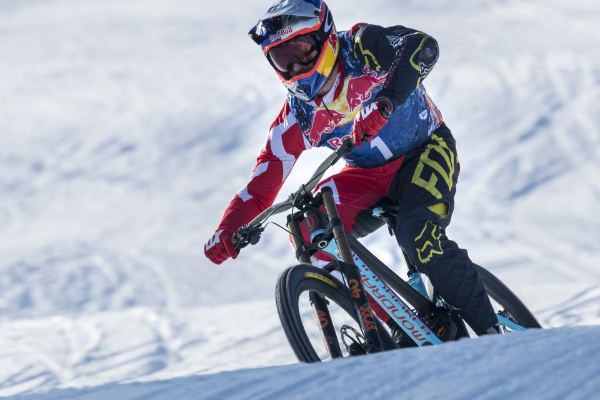Mountain biking is an exhilarating sport that pushes both physical and mental boundaries. However, when temperatures drop, the challenges increase. Dressing appropriately for cold weather mountain biking is not only about comfort but also safety. Proper attire ensures that you stay warm, dry, and fully capable of navigating tough terrains without risking hypothermia or other cold-related issues.
See Also: Does Cycling Help in Reducing Tummy?
1. Understanding the Importance of Layering
One of the fundamental principles of dressing for cold weather mountain biking is layering. Layering involves wearing multiple layers of clothing that can be easily adjusted based on your body temperature and weather conditions. The main goal is to stay warm while avoiding excessive sweating, which can lead to a rapid loss of body heat.
Base Layer: The base layer is in direct contact with your skin. Its primary function is moisture management. A good base layer wicks sweat away from your skin, keeping you dry and comfortable. Choose materials like merino wool or synthetic fabrics, as they effectively wick moisture and dry quickly.
Middle Layer: The middle layer provides insulation. It traps body heat to keep you warm. Fleece is a popular choice because it’s lightweight, breathable, and provides excellent warmth. Depending on the temperature, you might opt for a thicker or thinner middle layer.
Outer Layer: The outer layer, often referred to as the shell, protects you from wind, rain, and snow. This layer should be waterproof and windproof while allowing moisture from sweat to escape. Look for jackets made from breathable yet durable materials like Gore-Tex.
2. Choosing the Right Base Layer Materials
The base layer is crucial in cold weather biking. It’s your first line of defense against the cold. The right material will wick moisture away from your skin and prevent you from feeling cold and clammy.
Merino Wool: Merino wool is a favorite among many cold-weather athletes. It’s naturally antimicrobial, meaning it resists odor buildup even after multiple uses. It’s also excellent at regulating body temperature, keeping you warm in the cold and cool when it’s hot.
Synthetic Fabrics: Polyester and nylon blends are also good choices. These materials are designed to wick moisture and dry quickly. They are generally more affordable than merino wool and offer similar moisture-wicking capabilities.
Avoid Cotton: Never wear cotton as a base layer. Cotton absorbs moisture and holds it against your skin, which can lead to rapid heat loss and a risk of hypothermia.
3. Insulating with the Middle Layer
The middle layer plays a key role in insulating your body. It traps heat close to your body, providing warmth without adding too much bulk.
Fleece: Fleece is a popular middle layer material because it’s lightweight, breathable, and provides excellent insulation. Fleece comes in various thicknesses, so you can choose one based on how cold it is. Thicker fleece provides more warmth, while thinner fleece offers greater breathability.
Down and Synthetic Insulation: For extremely cold conditions, down or synthetic insulated jackets can be worn as a middle layer. Down is highly compressible and offers the best warmth-to-weight ratio, but it loses its insulating properties when wet. Synthetic insulation is less compressible but continues to insulate even when damp.
4. The Outer Shell for Protection
Your outer layer, or shell, protects you from the elements. It should be both windproof and waterproof while still allowing moisture from sweat to escape.
Waterproof and Breathable Jackets: Look for jackets made from materials like Gore-Tex or eVent. These fabrics are designed to keep water out while allowing sweat to escape. A good mountain biking jacket will also have features like a high collar, adjustable cuffs, and a drop tail to protect you from mud and spray.
Windproof Jackets: Windproof jackets are essential when biking in cold, windy conditions. They prevent cold air from penetrating your layers and help maintain your core temperature.
Venting Options: Look for jackets with ventilation options, such as pit zips or mesh-lined pockets, so you can regulate your body temperature as you ride.
5. Keeping Your Extremities Warm
Your hands, feet, and head are particularly vulnerable to the cold, so it’s essential to protect them.
Gloves: Invest in a good pair of winter cycling gloves. Look for gloves with insulation and waterproofing. Lobster claw gloves, which group your fingers together, can provide extra warmth.
Socks and Footwear: Wear thick, moisture-wicking socks made from merino wool or synthetic materials. Consider using overshoes or winter-specific cycling shoes to keep your feet warm and dry.
Headwear: A thermal skullcap or balaclava worn under your helmet can provide essential warmth. Make sure your headwear fits snugly under your helmet without causing discomfort.
Eyewear: Cold weather can make your eyes water, reducing visibility. Use clear or lightly tinted cycling glasses to protect your eyes from wind and debris.
6. Additional Tips for Cold Weather Mountain Biking
Stay Dry: Always carry an extra layer in your pack in case you get wet. Change out of wet clothes as soon as possible to prevent chilling.
Hydration: Staying hydrated is just as important in cold weather as in warm. Cold air can be dehydrating, so remember to drink water regularly.
Fueling: Your body burns more calories in cold weather, so bring extra snacks to maintain your energy levels.
Pre-Ride Preparation: Warm up before heading out. Do some light exercises to get your blood flowing and your muscles warmed up.
Post-Ride Recovery: Change into dry clothes as soon as your ride is over. Drink a warm beverage to help raise your core temperature.
Conclusion
Dressing appropriately for cold weather mountain biking is all about balance. You need to stay warm without overheating, dry without getting too sweaty, and protected from the elements without feeling restricted. By following these guidelines and choosing the right gear, you can enjoy your ride no matter how cold it gets.

